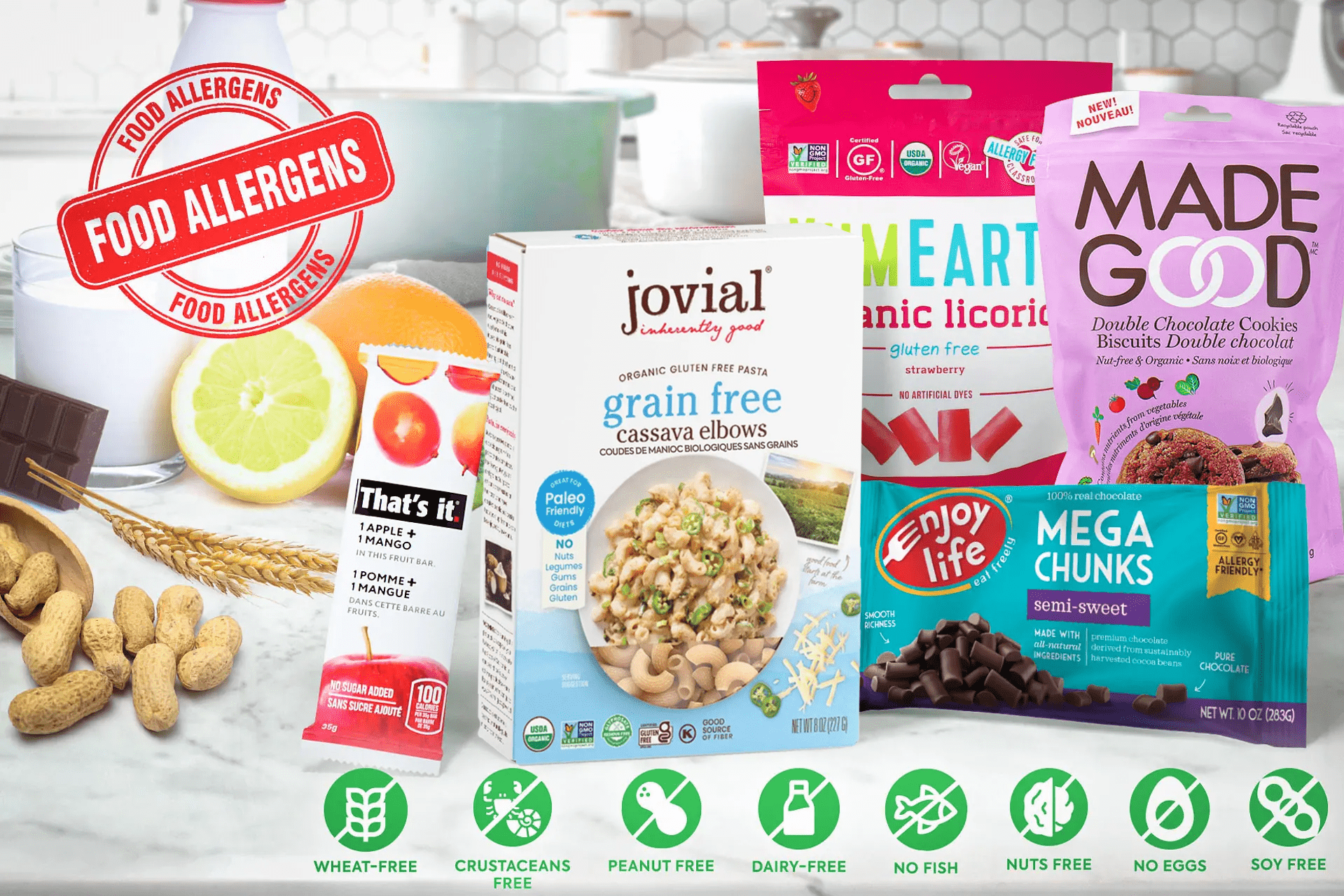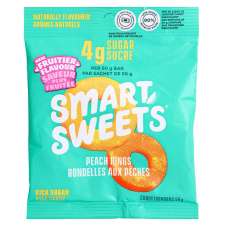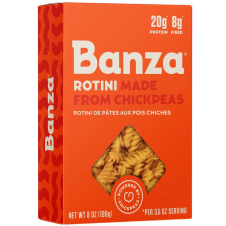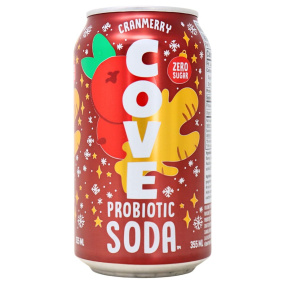
Food Allergy or Intolerance? Signs of a Food Allergy that Could Save Your Life!
Do you or someone that you know have a food allergy? We wouldn’t be surprised if you said yes! Currently, approximately 7% of the world suffers from a known food allergy, and the percentage continues to grow each year as food allergies can appear at any point in life. Additionally, approximately 18% of people in the world believe that they have a food allergy, which begs the question: How do you know if you have a food allergy? Could you have a food allergy too and not know it? Food allergies are on the rise and are starting to appear at any age with a variety of symptoms ranging from mild to fatal, which might cause some nervousness around the dinner table. Worry not, we’re here to answer all your questions and help you enjoy food anxiety-free!
Food Allergy vs. Food Intolerance
You may have heard someone say that they’re lactose intolerant, and another person say that they are allergic to milk, which might lead you to believe that they’re the same thing. However, it is important to know that a food allergy and a food intolerance are separate conditions. In the most simplest terms, the biggest difference between the two are:
- Food Allergy: Immune Response - Potentially Fatal
- Food Intolerance: Sensitivity, Immune System is Not Involved - Not Fatal
As you can see above, a food allergy is much more serious than a food intolerance. Nonetheless, both can be incredibly uncomfortable. Another important difference to note is that those with food allergies will have to completely eliminate the culprit food from their diet, whereas those with a food intolerance may be able to tolerate small amounts of the culprit food or may be able to eat it if it is prepared in a certain manner.
Why Do Food Allergies Happen?
Food allergies can occur for a variety of reasons. Some people may inherit food allergies, whereas others may develop food allergies. Nonetheless, the same process occurs in the body when an allergen is present. Your body will mistakenly perceive a food particle as harmful and try to get rid of it. In an effort to eliminate the allergen, your body will experience an immune response or an allergic reaction. Since the particle has been identified as harmful, this reaction will occur every time that you try to consume set food. The immune reaction can produce life-threatening symptoms, which is why it is crucial to completely eliminate the allergen from your diet.
Why Do Food Intolerances Happen?
The culprit behind food intolerances can be more difficult to identify. Some individuals may be sensitive to the food itself while others may be sensitive to preparation methods. For most individuals, the reason why they can not tolerate a certain food is because they lack the enzyme required to digest the food or they carry insufficient amounts of set enzyme, causing the body to work overtime, creating the uncomfortable symptoms.
Common Conditions Mistaken as a Food Allergy or Intolerance:
You may have had one bad experience after consuming a certain food and automatically assumed that you have a food allergy or intolerance. However, this may not be the case at all. There are multiple reasons unrelated to food allergies/intolerances that can cause similar symptoms. Some of these reasons are:
- Food poisoning: Commonly caused by undercooked food, improper storage or cooking procedures, or consumption of expired or contaminated food.
- Histamine Toxicity: Commonly caused by improper food storage procedures or improper treatment of fish.
- Underlying Health Condition: Celiac disease, a condition of the small intestine, is often mistaken for a gluten allergy/intolerance. Although both a gluten allergy/intolerance and celiac disease are triggered by consumption of gluten, Celiac disease creates a unique and more complex reaction. Celiac disease may produce unique symptoms not seen with a food allergy such as unexpected weight loss, stunted growth, ulcers, anemia, and fatigue. If you suspect that you could have Celiac disease, it is important to visit a licensed practitioner as soon as possible.
Common Food Allergies & Intolerances
Allergies and intolerance could present for any food. Nonetheless, some appear to be more common than others. In Canada, the top 8 most common allergens include:
- Peanuts
- Tree nuts (ex. Almonds, walnuts, pecans, brazil nuts etc.)
- Eggs
- Cow's milk/Dairy products
- Wheat/Gluten
- Soy
- Fish & Shellfish, such as shrimp, lobster and crab
- Sesame
Interestingly, you may not actually be allergic or intolerant to a food itself. There are other potential non-food related allergens that may be causing an allergic reaction:
- Pollen-Food Allergy: If you have a pollen allergy then you may experience food allergy symptoms when you consume certain fresh foods. Certain fresh produce, nuts or spices may trigger allergic reactions because they carry proteins that resemble pollen. This condition is known as oral allergy syndrome and is common in those that have experienced hay fever.
- Exercise-Induced Food Allergy: For some individuals, their food allergies are induced by physical activity. Eating certain foods before exercising can cause mild to severe allergy symptoms during exercise if you suffer from this condition.
What are the Symptoms of a Food Allergy?
Food allergy symptoms vary from person to person. For some, their food allergy may produce very mild symptoms, whereas for others it could present a life threatening situation. For some symptoms may appear in just a few minutes after food consumption or a couple of hours afterwards. Overall, the symptoms involved in a food allergy are considered serious since most of the symptoms that can present can compromise essential bodily functions like breathing.
Some of the symptoms that can present are:
- Tingling or swelling of the mouth, lips, tongue, throat, face or body.
- Hives, itching or eczema.
- Trouble breathing, wheezing, nasal congestion, or coughing.
- Abdominal pain, nause, vomiting, diarrhea.
- Dizziness, lightheadedness, fainting.
- Anaphylaxis*: Closing of airways, difficulty breathing, feeling as if there’s a lump in your throat, shock, dizziness, lightheadedness, severe drop in blood pressure, rapid pulse, fainting.
*Anaphylaxis is a life threatening condition that requires immediate medical care.
What are the Symptoms of a Food Intolerance?
If you have a food intolerance you may experience the same symptoms that a food allergy may produce. Nonetheless, these symptoms are not life-threatening and tend to affect the digestive system.
Common symptoms are:
- Nausea
- Vomiting
- Abdominal Cramps
- Diarrhea
- Bloating
How to Know if You Have a Food Allergy?
Avoid self-diagnosing as you could be putting yourself at risk. The only way to truly know if you have a food allergy is to undergo allergy testing. You will have to visit your physician or an allergist.
How to Know if You Have a Food Intolerance?
So, you’ve experienced some mild symptoms after eating a specific food and suspect that you could have a food intolerance. So, what do you do? Food intolerances can be difficult to pinpoint, so it is best to work in tandem with a practitioner to identify the true culprit. In most cases you’ll have to keep a food diary and temporarily remove the food from your diet, note how you feel, then re-introduce the suspected food and note if any symptoms re-appeared upon re-introduction. This might take some trial and error, as you could be intolerant to a specific food additive, preparation method, the food itself, or all of the above. Be patient and trust the process.
What Can I Eat if I Have Food Allergies /Intolerances?
If you have a food allergy or intolerance, you’ll have to make some adjustments to your diet. But, you’re in luck! You may not have to give up your favorite foods. Thanks to some very innovative and creative minds (not us), there are a variety of allergen-free versions of many foods available. From cookies to pasta noodles to candy, nothing is off the table! Just make sure to always read the food label or look for the allergen-free symbol. You can find allergen-friendly food in Canada here!
Key Take-Aways: If you only remember one thing after getting through this entire article, we want you to remember that if you suspect that you have a food allergy or an intolerance to seek professional help to obtain an accurate diagnosis. Although, food allergies and intolerances are two separate conditions, they can be difficult to diagnose and can pose a threat if misdiagnosed. If you have a food allergy or intolerance remember to always read the food label when possible or to shop in the allergen-free section for yummy treats and peace of mind!
















